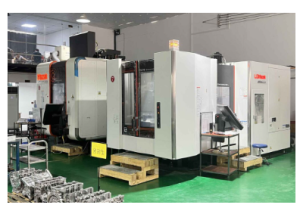This ensures motor housing is optimized for performance- a must in applications spanning the automotive, industrial machinery and other sectors in which high-efficiency, reliable operation is key to success. A motor case is designed to significantly impact motor performance through heat dissipation, structural integrity, and overall performance. Below, we will consider examples of effective methods of improving motor housing, so that the motor can give the expected high-quality performance.
Maximize Thermal Efficiency
Effective Heat Management
One of the most important things to ensure on an electric motor is efficiently managing heat. Thermal management such as adding heat sinks or water jackets can lower operating temperature by as much as 30%. For instance, a motor housing with an incorporated water jacket could be a bit of good to ensure better heat transfer than is typically possible with standard housings. Such a design ensures a perfect thermal environment, crucial for the motors and particularly important in high power requirements as in an electric vehicle or heavy duty machine.
Use High-Capacity Materials and Optimized Conducting
Another way to improve motor housing design is to choose materials that have high thermal conductivities. Everything from aluminum to copper-based alloys are well-suited to the cause, both providing high thermal efficiency and extra rigidity to the assembly. For example, some of the heat is transferred through the aluminum, which has a thermal conductivity rate of about 235 watts per meter Kelvin.
Ensure Structural Robustness
Lightweight + Strong Materials
The performance of motors depend largely on the structural integrity of motor housing. Lightweight materials create a lighter engine, for example, which means a corresponding decrease in overall vehicle or machinery weight with no loss of strength. Such as magnesium alloys, with light weight, high strength, compared with traditional materials, the weight of these casing is reduced by almost up to 40%, the power to weight ratio of the motor gets improved.

Advanced Design capabilities
Newer design methods, such as topology optimization and finite element analysis, allow engineers to design motor housings that are ideal for use as a load bearing component. Does so using heat maps to identify stress points, thereby redistributing material to make the house stronger, while still trimming away excess, extraneous crud that adds unnecessary weight and slows everything down.
Enhance Aerodynamics
Streamline Housing Design
To obtain the best efficiency in motors for automotive and aerospace applications it is essential to be efficient aerodynamically. Less air resistance with more efficient housing means less drag and better efficiency. Adopting this smooth, rounded housing design can increase airflow around the motor, improving overall vehicle efficiency by as much as 5%.
Reduce Noise and Vibration
Build in Vibration Dampening
Too much noise and vibration is not only annoying but hurts motor eficiency. Some of these effects can be substantially minimized by integrating damping materials or designs within motor housing itself. For example; using rubber mounts or internal ribs in the housing can reduce vibration by 30%, thereby improving the smooth operation and reducing wear to the components across the board.
Use Noise-Reducing Materials
Specialized materials that dampen noise, like composites or exotic metal alloys, can be used in the construction of motor housing to minimize the acoustic footprint of the motor. In addition to bolstering user comfort, the enhancement fits with more stringent noise level legislation in industrial as well as consumer applications.
These improvements can enable manufacturers to enhance motor performance considerably, resulting in more efficient, dependable, and durable machinery. These changes are made to meet the provisions for performance and to help in reducing the energy used and the operational costs.